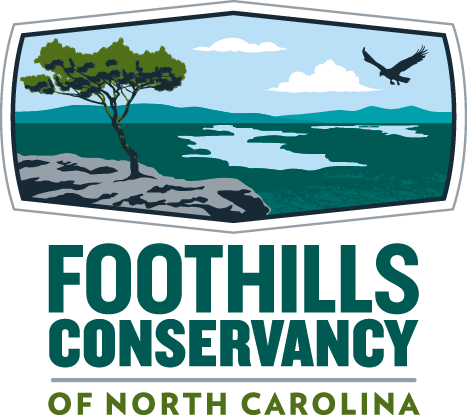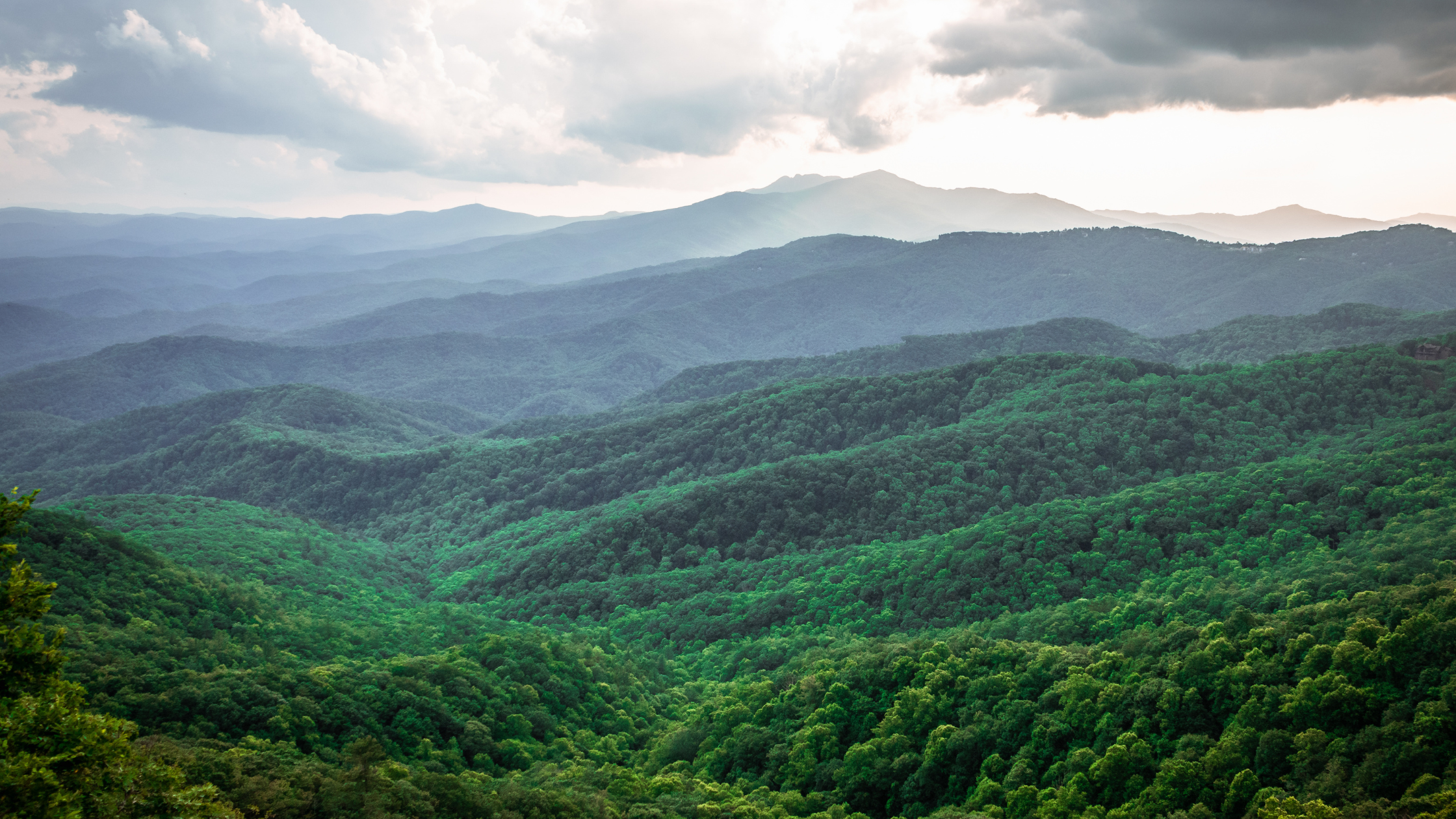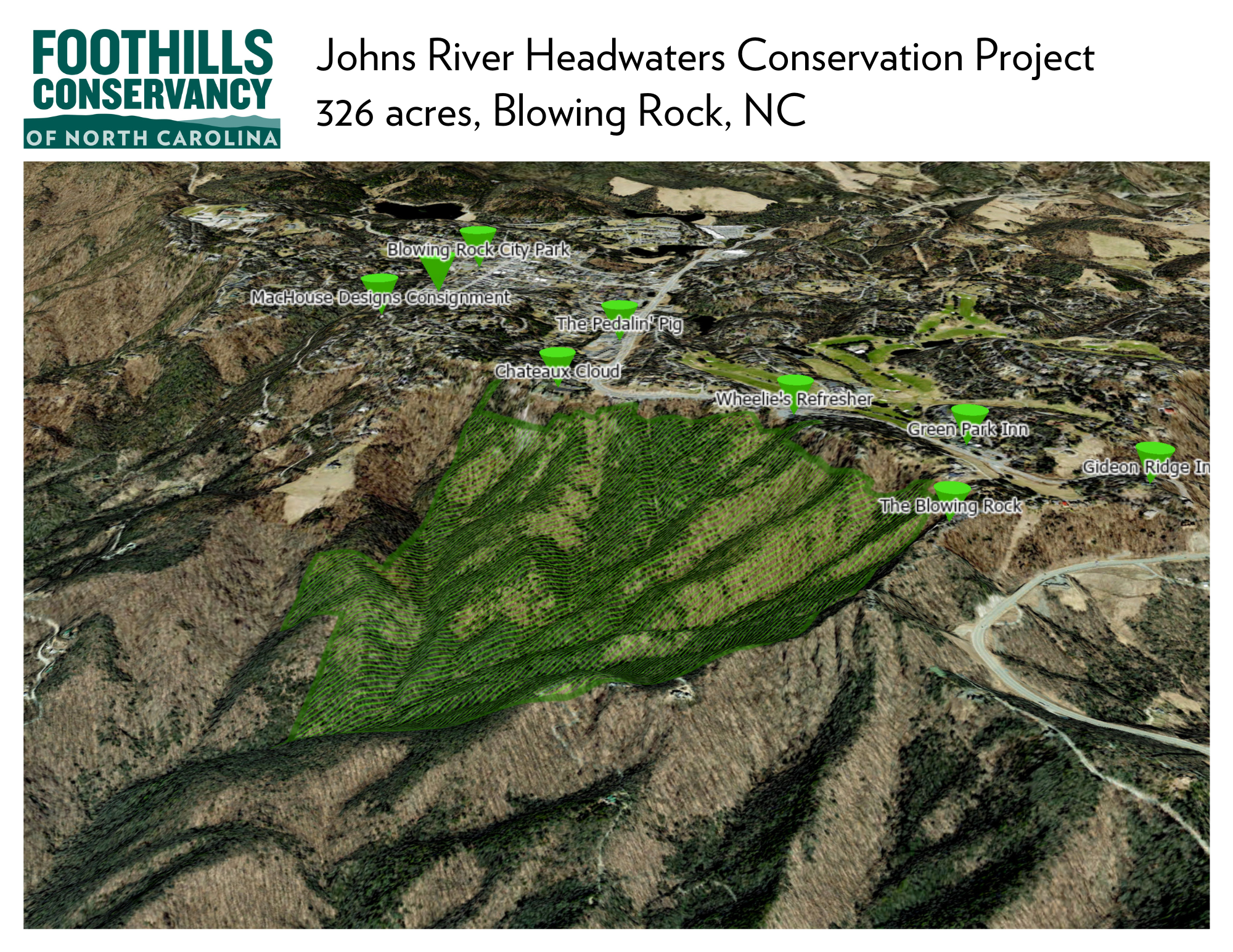Johns River Headwaters in Blowing Rock Permanently Protected
View press release HERE
On February 9, 2024, Foothills Conservancy acquired and permanently protected a 326-acre tract of land in Blowing Rock, positioned directly on the Blue Ridge Escarpment, which contains the source of the Johns River. This extremely significant parcel of land is a major part of the iconic, expansive mountainous view seen from The Blowing Rock attraction, the oldest travel attraction in North Carolina, as well as from various places along the heavily-traveled US 321 corridor and other locations within the town limits of Blowing Rock.
The purchase was made possible by state grants from the North Carolina Land and Water Fund and the North Carolina Ecosystem Enhancement Grant program, foundation grants from the Glass Foundation and the Wilson Family Foundation, contributions from conservation philanthropists Fred and Alice Stanback, and Brad and Shelli Stanback, as well as generous donations and support from 97 individuals and local businesses in the Blowing Rock community and other grant funders.
Millions of people receive clean drinking water from the Catawba River, and the Johns River is its longest headwater tributary. This now-protected land also harbors a number of significant natural communities and threatened plant and animal species documented by the North Carolina Natural Heritage Program.
The Town of Blowing Rock, NC, is situated on the Eastern Continental Divide and is a unique place that holds the headwaters of three major rivers: the Yadkin River, the New River and the Johns River.
Near the eastern side of Blowing Rock, a small mountain spring marks the headwaters of the Yadkin River, which flows down the Blue Ridge Mountains, through Happy Valley and the Patterson community in Caldwell County, then on to Wilkesboro and Winston-Salem, before becoming the Pee-Dee River and emptying into the Atlantic Ocean. This headwater area of the Yadkin River is served and protected by Foothills Conservancy of North Carolina.
Another significant spring that begins in Blowing Rock is the origin of the New River, one of the oldest rivers in North America. The New River flows north through Virginia and merges with the Gauley River to become the Kanawha River in West Virginia, before entering the Ohio River, which in turn feeds the Mississippi River before emptying into the Gulf of Mexico.
On the southern side of Blowing Rock, amidst the plunging mountainous terrain, is the source of the Johns River, a major tributary of the Catawba River, which becomes the Wateree River. The Wateree River then becomes the Santee and finally enters the Atlantic Ocean near McClellanville, SC in Charleston County.
Everything that happens to the land in Blowing Rock impacts these three vastly important river basins and the people who depend on the rivers downstream. Development around Blowing Rock has the potential to threaten these watersheds and could jeopardize drinking water for millions of people. Therefore, the purchase and protection of this tract of land and others like it by Foothills Conservancy is crucial for the ongoing protection of these important river basins and the mountain communities where they originate.
Thanks to this grant funding, and combined with considerable support from the following generous donors, Foothills Conservancy of North Carolina was able to successfully acquire and permanently protect the 326-acre Johns River Headwaters land.
Substantial grant funding from:
North Carolina Land and Water Fund
North Carolina Department of Justice Environment Enhancement Grant program
Fred & Alice Stanback
Brad & Shelli Stanback
Glass Foundation
Wilson Family Foundation




